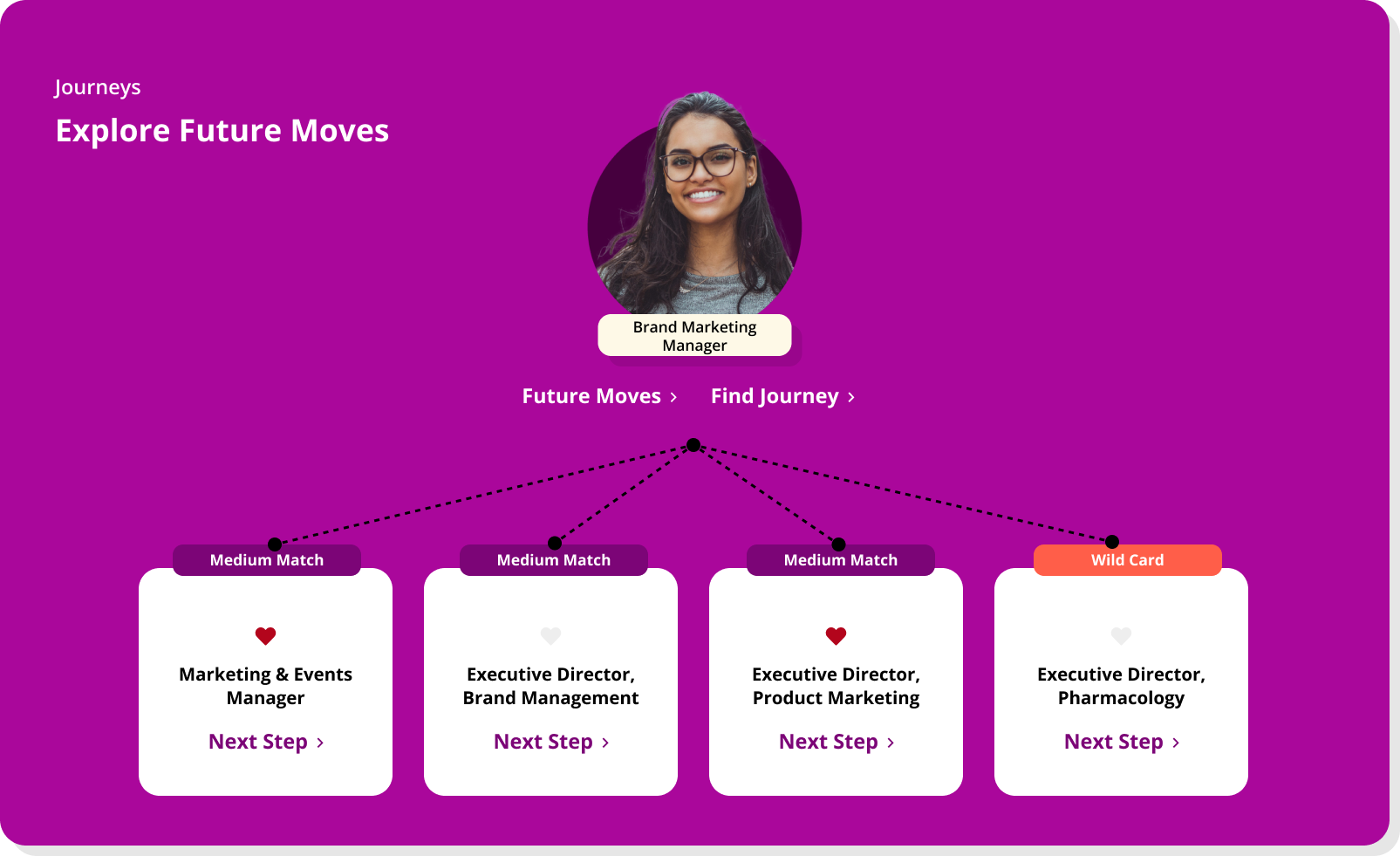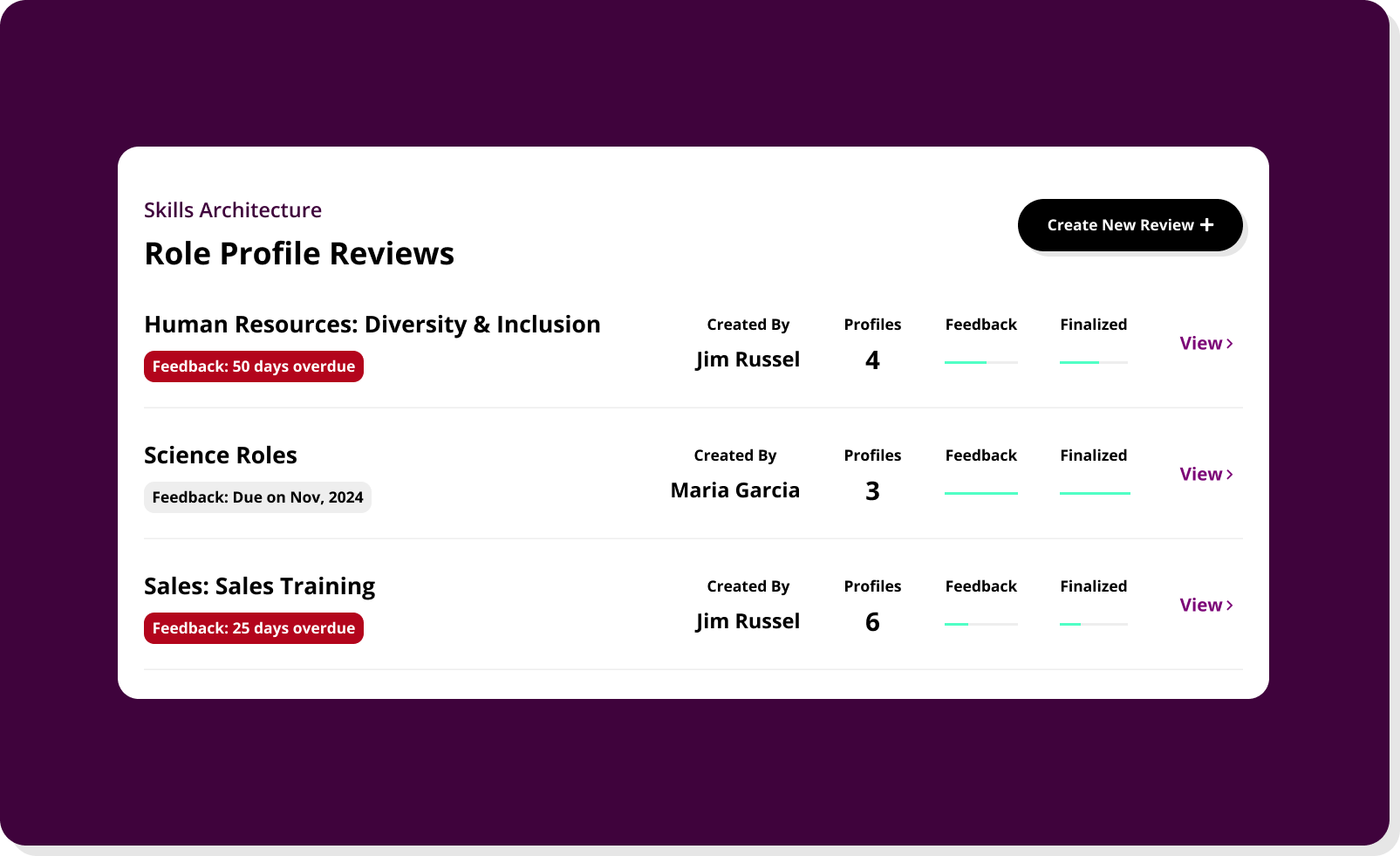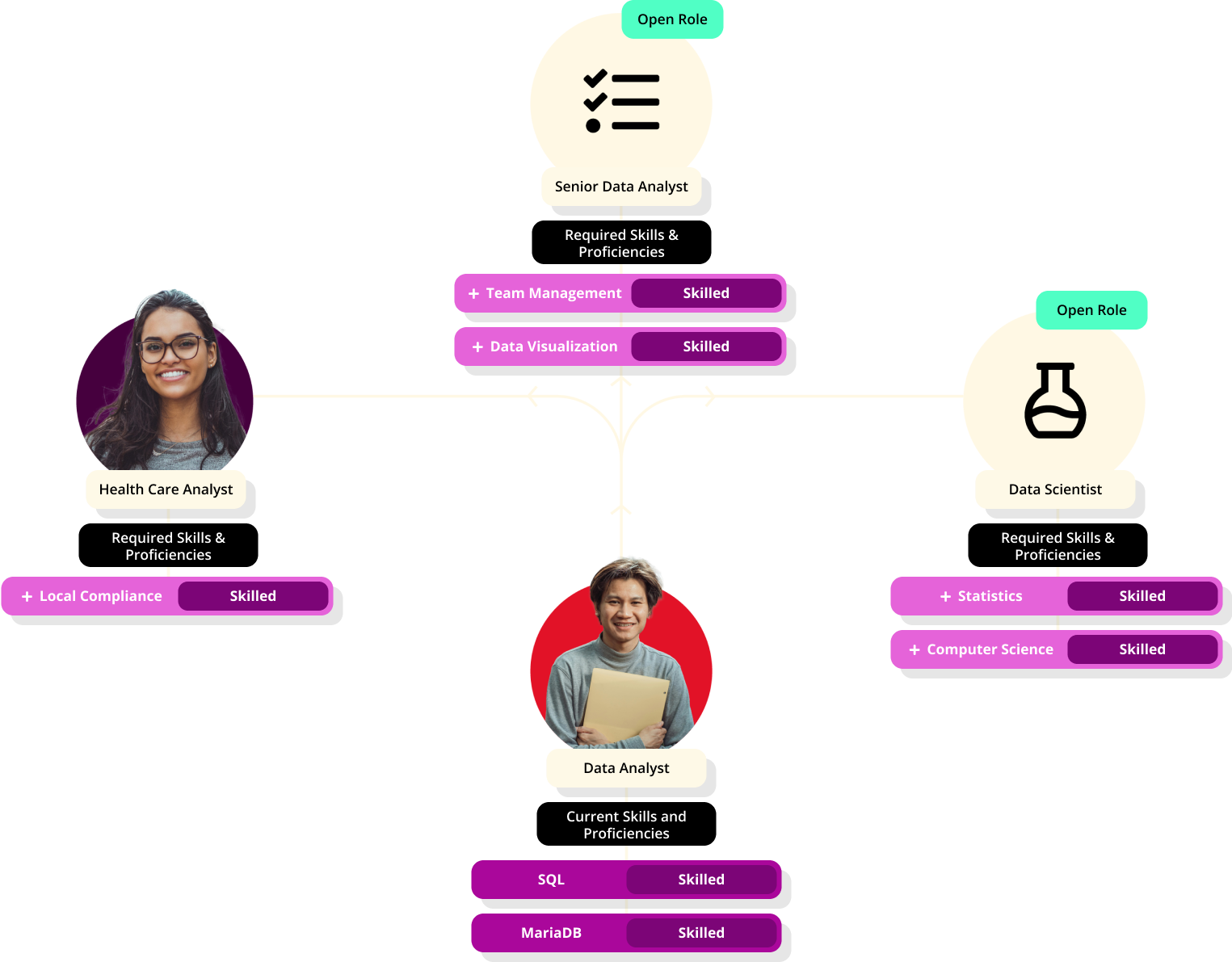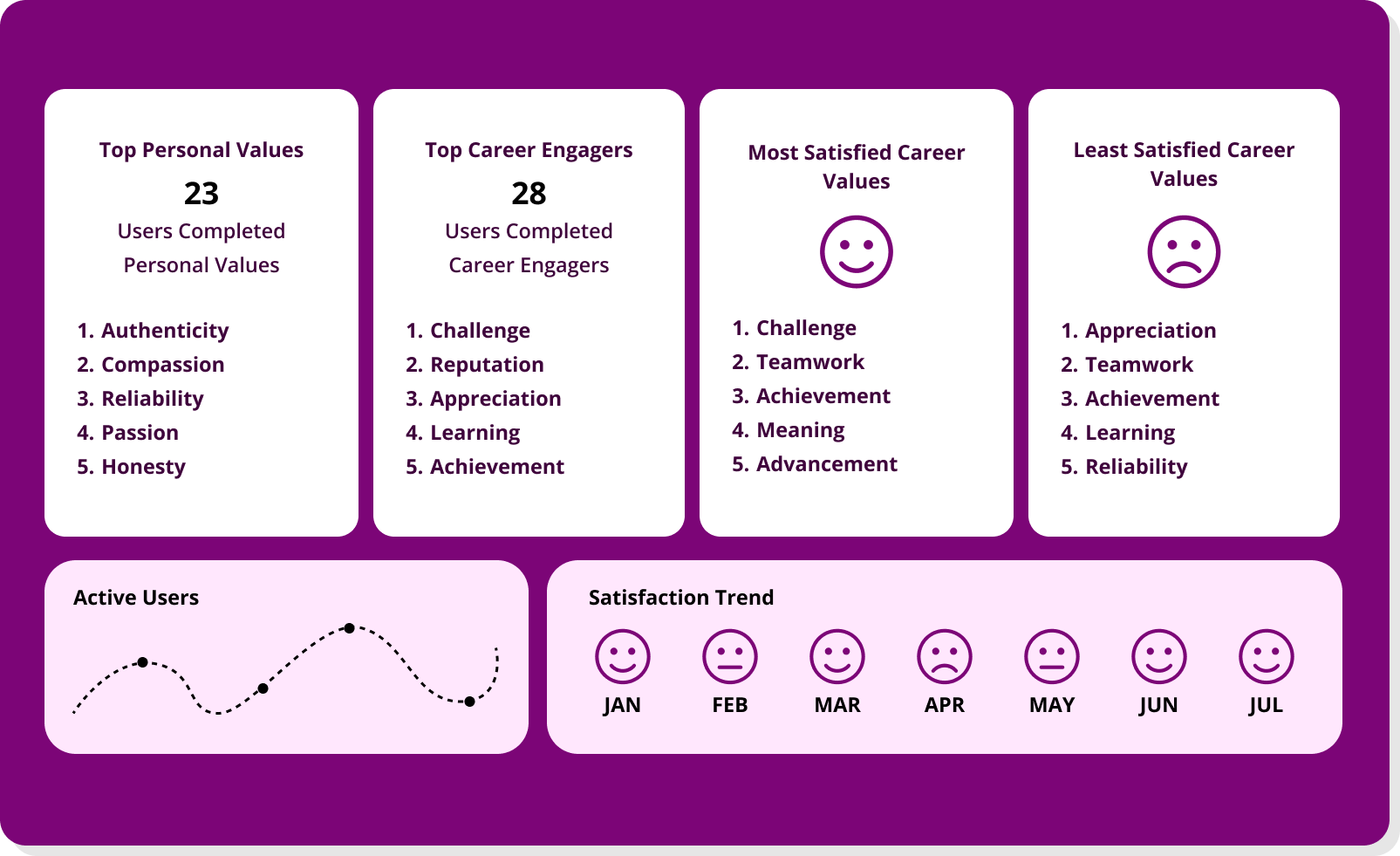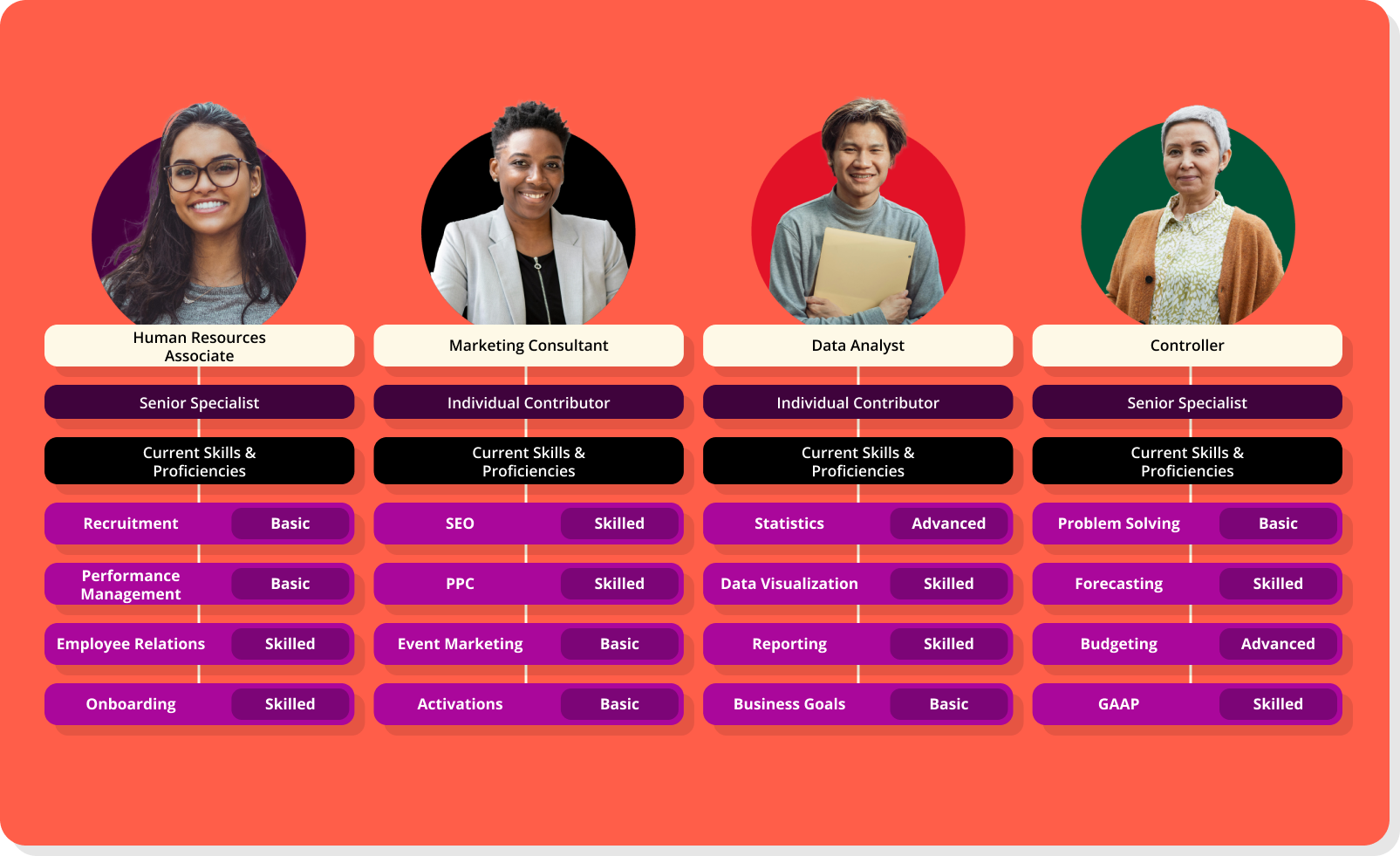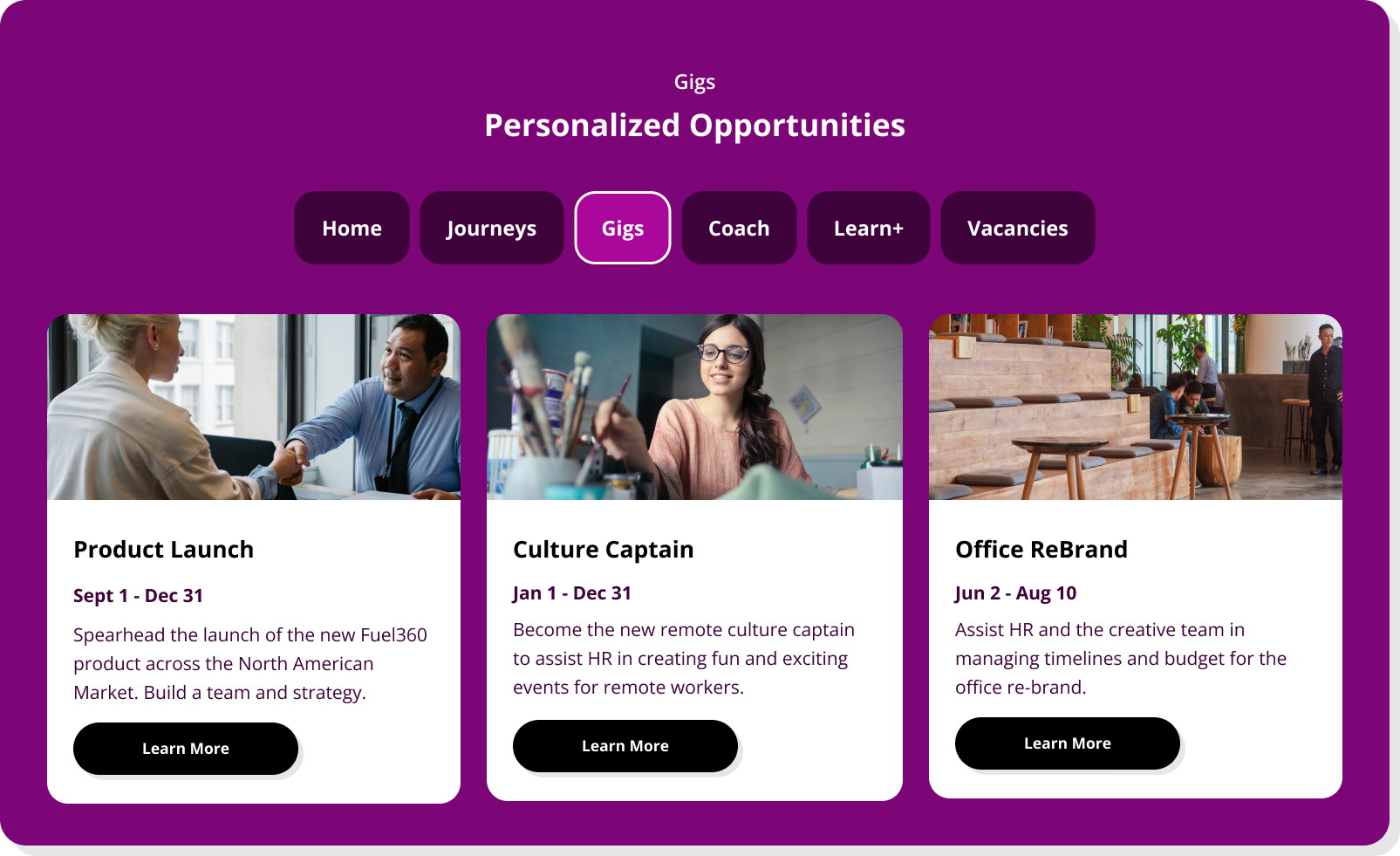For decades, performance has been equated with upward movement like title changes, bigger teams, and more hierarchy. But this model is built on the flawed assumption that opportunity scales with effort.
Vertical growth is constrained by design. Promotions depend on organizational structure, available head count, and timing. Most employees will outpace the speed of these opportunities. When that happens, even high performers stall—not because they’ve stopped growing, but because the system has nowhere for them to go.
This creates three problems:
- It bottlenecks development. People sit idle in roles they’ve outgrown, waiting for space above them to open while momentum fades.
- It drives unhealthy competition. When vertical roles are scarce, performance becomes comparative, not collaborative. High-value contributors are pitted against each other for a shrinking number of slots.
- It distorts how we evaluate potential. Employees are often promoted because there’s a vacancy, not because they’re ready. Others are overlooked simply because their growth doesn’t fit the vertical mold.
Over time, this leads to disengagement, stagnation, and (preventable) attrition. Talent is abundant, but the system rewards a narrow, outdated definition of progress.
This article will cover why horizontal growth is the key to high performance.
What is horizontal growth and why it’s misunderstood?
Horizontal growth is often confused with lateral moves or sideways transfers, but there’s an important distinction between these terms: Horizontal growth is about expanding capability, such as developing new skills, increasing scope, or gaining influence across adjacent domains.
Rather than moving up a narrow path, horizontal growth moves more broadly It involves taking on increasingly complex challenges within a role, contributing to cross-functional projects, and deepening fluency in multiple disciplines.
This could look like a product manager cultivating UX design expertise, or a finance analyst learning to navigate cross-departmental planning. It could even be an engineer who steps into a mentorship role while building stakeholder communication skills.
That kind of growth is often invisible to traditional talent systems because it doesn’t appear as a title change. Its impact is measurable though, as employees gain breadth, versatility, and problem-solving capabilities. They become better at their job as well as more valuable to the organization.
Horizontal growth isn’t a replacement for vertical growth—it sustains it. Employees who grow laterally build the foundation that makes them ready to move upward. Without it, promotions are often premature or unsupported; with it, development becomes multidimensional and more resilient to structural constraints.
How horizontal growth drives higher performance?
Performance is no longer defined by how quickly someone advances titles. Instead, it focuses on how widely someone can contribute. Employees who expand their skill set horizontally are better equipped to lead, problem-solve, and adapt.
Let’s look deeper at how horizontal growth creates leverage at every level.
It strengthens individual capability and decision-making
When employees grow across functions, domains, or projects, they build pattern recognition, which is the ability to connect disparate ideas and draw informed conclusions. That accelerates decision-making, especially in complex or ambiguous environments.
Horizontal growth also expands cognitive range. For instance, a marketer who understands data infrastructure can collaborate more effectively with analytics teams. Meanwhile, a finance lead who’s worked with operations has a sharper understanding of cost drivers and execution risks. These abilities directly influence how fast and how well someone can deliver outcomes in role.
Critically, this growth increases the area of impact. Employees become valuable not just for what they know but for how widely they can apply it.
It builds adaptability across teams and contexts
Business conditions shift. Priorities change. Teams are restructured. In environments where change is constant, horizontal experience becomes a competitive advantage.
Employees who have grown laterally can step into new contexts without starting from zero. They understand how different functions operate, where dependencies lie, and how to build influence in unfamiliar spaces. This makes them more deployable, less siloed, and more likely to thrive amid organizational shifts.
It also improves collaboration: People with cross-functional fluency reduce friction between teams. They speak the language of multiple domains, anticipate stakeholder needs, and serve as translators between disciplines (a critical capability in large, matrixed environments).
It produces more effective, context-rich leaders
Leadership readiness is about more than soft skills or tenure; it’s also about scope—the ability to lead in complexity, make trade-offs, and align cross-functional teams around outcomes. Horizontal growth builds a wide scope.
Leaders who’ve worked across functions are less likely to operate in isolation. They bring strategic awareness of how decisions cascade through the business. They’ve practiced leadership outside of formal authority as well through project work, cross-team influence, or mentorship, and enter formal leadership roles with that muscle already developed.
Organizations that over-index vertical advancement without horizontal depth often promote individuals who understand their function, but not the system around them. That creates leadership blind spots. Horizontal growth closes them.
It builds organizational agility and reduces risk
At the enterprise level, horizontal capability creates flexibility. When more people possess a broad range of skills, the organization isn’t dependent on a handful of specialists or locked into rigid resourcing plans.
This is crucial during periods of disruption. Whether responding to a market shift, reorganization, or talent departure, employees who’ve grown horizontally are the ones who can pivot, absorb new responsibilities, and keep teams moving forward.
It also reduces business risk, as skills diversification ensures critical knowledge spread among personnel, rather than residing with only one person or team. It creates redundancy in the best sense: not duplication of effort, but a broader foundation of capability that can support continuity.
In a skills-based organization, this typeof workforce resilience is a strategic asset.
What stops organizations from enabling horizontal growth?
The logic behind horizontal growth is sound, but most organizations aren’t set up to support it. Although they value growth, their systems and incentives reinforce a narrower definition of success.
Let’s examine the friction points that get in the way.
Incentives remain tied to upward movement
Most performance systems reward advancement instead of contribution. Promotions bring visibility, compensation changes, and formal recognition, while lateral growth often goes unnoticed.
That results in misalignment. Employees who expand their capabilities across teams, functions, or projects often generate more value but receive less credit. Over time, this disincentivizes skill-building outside of the formal ladder and reinforces the idea that growth only counts if it leads to a new title.
Skill pathways are hidden or nonexistent
Employees can’t grow horizontally if they don’t know where or how to move. Most organizations lack the infrastructure to show logical next steps beyond promotion. Adjacent roles, stretch projects, and skill-based opportunities exist, but they’re invisible to the people who could benefit most from them.
Without that visibility, lateral growth feels like a detour, and even for motivated employees, the friction is often too high to navigate.
Managers default to linear development plans
Most managers aren’t trained (or incentivized) to support horizontal growth. They focus on advancing direct reports within a current role or prepping them for the next one in line. Additionally, lateral moves can feel disruptive, especially when they involve another team or function.
Often, it’s less about intent and more about enablement. Without the right tools, career frameworks, or guidance, managers fall back on familiar paths. As a result, development becomes a checklist rather than a strategy.
Job architectures are static and out of step with reality
Many organizations still rely on rigid job structures that don’t reflect how work happens. Roles are narrowly defined, skills are clustered in outdated taxonomies, and progression frameworks view growth as a straight line.
That rigidity makes it harder to model cross-functional moves or support dynamic career paths. It also makes it harder for systems and people to recognize and reward capabilities when they don’t fit into predefined tracks.
How to implement a horizontal growth program in your organization?
Shifting from a promotion-based model to one that values horizontal growth requires, among other elements, strong infrastructure. Most organizations support vertical growth by default in the form of job ladders, review cycles, and leadership programs designed around it. But horizontal growth often lacks that level of structure.
To make it a reality, organizations need to build systems that uncover opportunities, align growth with business needs, and reframe how performance is recognized. Here’s how to put that into practice.
Make skills pathways transparent and visible to employees
People can’t grow horizontally if they don’t know what’s possible. The first barrier is visibility. Most organizations have career frameworks for vertical movement, but few offer clear, accessible guidance for lateral development. As a result, employees are left to rely on informal networks or managerial permissions, which creates inequity and inconsistency.
A skills-based approach changes that. By mapping adjacent roles, transferable skills, and logical lateral moves, organizations can show employees what horizontal growth looks like. This could mean revealing internal projects, mentorship opportunities, or short-term gigs that build adjacent capabilities—all tied to their current skill profile.
The key is making these pathways dynamic and personalized. Employees shouldn’t see a one-size-fits-all career map. Instead, they should see a range of options that reflect their strengths, goals, and context and understand how those pathways align with business priorities.
Use talent intelligence to align growth with strategic value
Horizontal growth produces the most value when it serves both the individual and the business. Realizing thatthat potential requires a system that knows where the organization is headed, what capabilities are needed, and where internal talent can fill the gaps.
This is where talent intelligence platforms—supported by a robust skills ontology—are essential. They allow organizations to map their current skills distribution, identify adjacent or emerging needs, and then connect the two through actionable opportunities.
Instead of guessing where to deploy talent or invest in development, leaders can let data guide these decisions. This ensures horizontal growth is both a personal win and a way to build enterprise agility, fill critical capability gaps, and reduce reliance on external hires.
Redirect development conversations to focus on breadth
Most development plans emphasize upward movement (e.g., how to get to the next level, lead a team, take on more scope). While that’s still important, it leaves little room for growth that doesn’t involve a title change.
To support horizontal development, companies need to shift how growth is framed in conversations between managers and employees. This means asking better questions like: What are you curious about? Where do you want to build fluency? What projects would stretch your capabilities? What aspects of the business do you want to understand?
Performance frameworks should then support these conversations. That includes competency models that reward breadth and versatility, not just depth and authority. It also entails treating lateral moves and stretch projects as valid and valued outcomes of performance, rather than deviations from it.
Equip managers to support non-linear career growth
Managers play a central role in enabling or blocking horizontal movement. Often, they don’t resist development, but they lack the tools, visibility, or incentives to encourage it outside traditional tracks.
To change that, organizations need to train managers to identify and advocate for lateral opportunities. That includes teaching how to recognize adjacent skills, how to help employees expand their range within their current role, and how to balance team continuity with career progression.
Equally important is creating internal transparency. Managers should be able to see skills across the organization, not just in their own teams. That broader view helps them champion talent mobility, participate in cross-functional development plans, and contribute to enterprise-wide growth strategies .
Shift recognition to reward contribution and learning
Employees will grow in the direction the system rewards. So, if recognition is only tied to promotion, then anything outside of that—skill-building, cross-functional work, informal leadership—becomes invisible.
Organizations that want to support horizontal growth must rethink what “good” performance looks like. Contribution, adaptability, and learning velocity should carry visible weight. That can take the form of celebrating people who take on new challenges, build capabilities across functions, or mentor others, even if their title stays the same.
These aren’t mere token gestures. They accumulate to help shift the narrative of success from hierarchy to impact. When employees see that growth is possible (and recognized) even without a new title, they’re more likely to stay engaged, extend their range, and contribute more widely to the business.
Use Fuel50 to support your employees’ horizontal growth
Fuel50 enables horizontal growth as a core capability of its talent intelligence platform. Every part of the system, from the underlying ontology to the AI matching engine, is designed to make non-linear growth paths visible, actionable, and valuable.
Organizations that adopt Fuel50 equip their workforce with a system that supports scalable, transparent, and strategically aligned capability development to help build future-ready workforces.
Here’s how Fuel50 turns horizontal growth into a practical, high-impact reality.
Fuel50’s talent marketplace reveals growth opportunities employees can act on
Horizontal growth can break down if employees can’t see where to go next. Traditional systems filter opportunities by job title or function, making it difficult to uncover options that fall outside of the direct vertical ladder.
Fuel50 solves this by using AI to match people to roles, gigs, projects, and developmental opportunities based on their skills, not just their current position. The system identifies adjacent capabilities, highlights stretch roles, and suggests experiences that align with each individual’s growth potential.
This enables employees to explore new directions within the company, without waiting for a promotion or job opening. It also helps the business hone in on hidden internal talent, redeploy skills more effectively, and reduce attrition due to career stagnation.
The skills ontology connects roles and skills across the organization
The foundation of Fuel50 is a dynamic skills ontology—a living structure that reflects how skills show up in work. It captures over 5,000 capabilities, including technical skills, behaviors, and tools, each clearly defined and mapped to specific roles and levels.
Unlike static taxonomies, Fuel50’s ontology evolves continuously and adapts to the context of each organization. It understands how the same skill may differ between roles, departments, or seniority levels, as well as recognizes relationships between adjacent or transferable skills.
This connectivity enables smooth horizontal movement. The ontology reveals logical transitions that might not be obvious, such as how a customer service representative with empathy, communication, and conflict resolution skills could thrive in customer-facing operations or employee experience roles. These insights drive smarter matches and open doors beyond the typical hierarchy.
Career pathing tools support self-directed, skills-first development
Fuel50’s platform empowers personnel to take ownership of their growth by showing them how their skills align with potential roles and where they can go next.
The career pathing experience uncovers personalized options based on each user’s current skill profile and interests. Employees can explore what skills are needed to carry out alternate functions, pursue a lateral role in a different business unit, or take on a more complex version of their present role.
Every path is accompanied by clear proficiency descriptors, developmental suggestions, and learning recommendations, giving people a comprehensive roadmap. That transparency shifts development from reactive to proactive so employees have agency over their future.
Managers gain tools to support non-linear development
Managers often default to promotion-oriented growth because they lack the visibility or guidance to support anything else. Fuel50 changes that.
The platform equips managers with real-time insights into their team’s skill sets, growth readiness, and internal mobility opportunities. They can pinpoint stretch assignments, connect team members to cross-functional roles, and structure developmental plans that go beyond the next job title.
By giving managers access to skills intelligence and adjacent role data, Fuel50 transforms them into growth enablers. They become active participants in capability development and internal talent movement, rather than passive evaluators of performance.
Organizations build strategic agility through internal talent mobility
At the enterprise level, Fuel50 enables HR and business leaders to see where skills exist, where they’re underutilized, and how they can be better deployed to meet evolving company needs.
Because the platform connects role architecture, skill data, and opportunity matching, leaders gain a comprehensive view of talent capacity and mobility potential. This allows for faster, smarter workforce decisions, whether that’s building cross-functional teams or launching internal marketplaces that close critical capability gaps.
Horizontal growth thus becomes an operational strategy: Talent pipelines grow stronger, external hiring dependence decreases, and the company becomes more resilient in the face of change.
Recognition and cultural shift alongside the system
Fuel50 doesn’t just make horizontal growth possible—it helps make it visible and valued.
Through its reporting and analytical features, HR leaders can track participation in stretch projects, gig work, and cross-functional moves. That data then complements performance conversations and workforce dashboards, elevating the profile of non-traditional growth paths.
Over time, this shifts the company culture. Success is no longer defined by title change alone, but is instead measured by capability, contribution, and continuous learning. Give your business the ingredients necessary for a modern, high-performance workforce.




